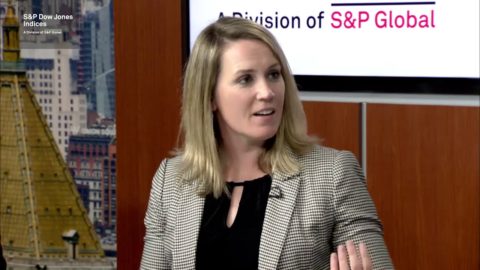
Investors Behaving Better: Understanding the Concept of Risk
HDWS Behavioral Finance Series
By Steven Higgins, Financial Advisor, Principal
Are you risk averse? Seems like a simple question with a binary answer: yes or no. When it comes to investing, there are many different kinds of risk and each carries the ability to keep you from reaching your goals. It’s certainly true that investors can fail to realize the returns often touted by the investments they own. The reason is because investor behavior is often driven by emotion. Emotion is influenced by lack of information or the inability to process information. The emotions, often fear and greed, cause precisely the wrong actions at the wrong times. I personally believe it is fear of risk that cripples most investor’s ability to meet their goals. So if it is fear of risk that is the problem we need to make sure that our clients better understand risk.
Let’s take a look at the main types of risks investors face: Volatility Risk, Business Risk, Inflation Risk and Interest Fate Risk. On a fear level scale of 1 being really scary, 2 being scary, 3 being kind of scary, and 4 being a little scary…
Volatility Risk
Fear Level: 4 (a little scary)
What it affects: stocks, stock funds, bonds, bond funds, commodities
It should be understood that the value of investments go up and down. The amplitude of the volatility will vary based on the individual characteristics of each investment. Increased volatility does not necessarily increase the chance of total loss. Volatility decreases our ability to predict an investment’s value at any point in time. Generally, it is the downside of volatility that creates a risk aversion, since investors are quite comfortable with upside volatility or growth. Proceed with caution, as attempts to mitigate downside volatility will generally decrease upside volatility or growth as well.
How to address it: By using a diverse asset allocation, maintaining sufficient liquidity, and managing a withdrawal rate of less than 4% during retirement.
Interest Rate Risk
Fear Level: 3 (kind of scary)
What it affects: bonds, bond funds, fixed annuities, private loans, preferred stock, REITs, utility company stocks
With interest interest rates still low across the globe, there remains heightened significant levels of Interest Rate Risk. Since bond prices move opposite of interest rates, it seems inevitable that there will be significant volatility in bond values. There is no way to know how much rates will rise but a prudent investor would take steps to mitigate interest rate risk in their portfolio. Often people think of bonds as safe; in the case of bonds, however, an investor should understand what “safe” means. High quality bonds are generally safe from Business Risk as less than .01% of investment grade bonds have experienced default since 1970.* However, bonds have always experienced Interest Rate Risk and as long as rates are low, bonds have inherent Volatility Risk as well.
How to address it: By reducing the amount of investments you own in long term bonds, and investments like CDs and fixed annuities. Any investment that pays a fixed interest rate will be worth less as interest rates rise. Why would anyone pay full price for a long term bond paying 3% when newer bonds are paying 5%? Have a professional take a look at the real interest rate risk in your portfolio. Many investors may be shocked to find they carry a significant amount of Interest Rate Risk.
Inflation Risk
Fear Level: 2 (scary)
What it affects: cash & cash equivalents, bonds, bond funds, fixed annuities
The rising cost of living is one of the most complicating factors of long-term financial planning. Inflation has always been an economic reality but it still seems to come as a surprise to many long term investors, especially retirees. A long term inflation rate of 3% will decrease the spending power of a dollar by 50% every 24 years. Because the last decade has been one of historically low inflation rates, investors may have lowered their guard. Investors need to own investments that have the ability to inflate. If too much focus is put onto decreasing Volatility Risk, the portfolio will not be able to move upward with inflation. The investor will be subjected to Inflation Risk, which will decrease spending power over time. Since people are living longer than ever, it has never been more important to protect against Inflation Risk.
How to address it: By not holding more cash and cash equivalent investments than necessary, owning a significant amount of investments that correlate positively to inflation, and by thinking realistically about increasing life expectancy and the likelihood of increased inflation going forward.
Business Risk
Fear Level: 1 (really scary)
What it affects: individual stocks, individual bonds, private investments
At the core of any rational risk aversion should be business risk. Individual businesses and organizations can experience unique crises or challenges that cause them to miss a bond payment, miss or cancel a dividend, or even go out of business. This is a risk inherent to individual organizations and is generally mitigated through diversification. Many investors often mistake Volatility Risk for Business Risk. For example, when the broad stock markets, made up of thousands of diverse companies drops in value, investors might feel like they will lose their invested capital, so they instinctively sell out out of a diversified portfolio. This decision would be irrational because the broad market has never gone to “0”. That scenario would require every public company to go out of business. Conversely, an individual with too much invested in a stock or bond from a single company should legitimately be concerned about Business Risk.
How to address it: By keeping individual security holdings to less than 10% of a total portfolio, avoiding private unregistered securities such as private loans, bridge loans, and real estate pools.
Problems arise when there is miscommunication or a misunderstanding of a client’s risk aversions and risk tolerances in relation to the expectations of certain results. There are certain relationships that need to be understood for the long term investor to be successful. By better understanding risk, hopefully investors will have a better idea of what it is they are actually afraid of.
On Tuesday, October 16, we will be holding three events in our office to discuss the role of behavioral finance in our strategies. The Coffee Chat will be held at 8:15am, the Lunch & Learn event will be held at 11:45am, and the Brews & News event will be held at 5pm. If you would like to join us, please email John at john@hdwscolorado.com to save your place at the table.
*Source: Bloomberg News. The opinions voiced in this material are for general information only and are not intended to provide specific advice or recommendations for any individual. All performance referenced is historical and no guarantee of future results. All investing, including stocks, involves risk including loss of principal. No strategy assures success or protects against loss. There is no guarantee that a diversified portfolio will enhance overall returns or outperforms a non-diversified portfolio. Diversification and asset allocation do not protect against market risk.









